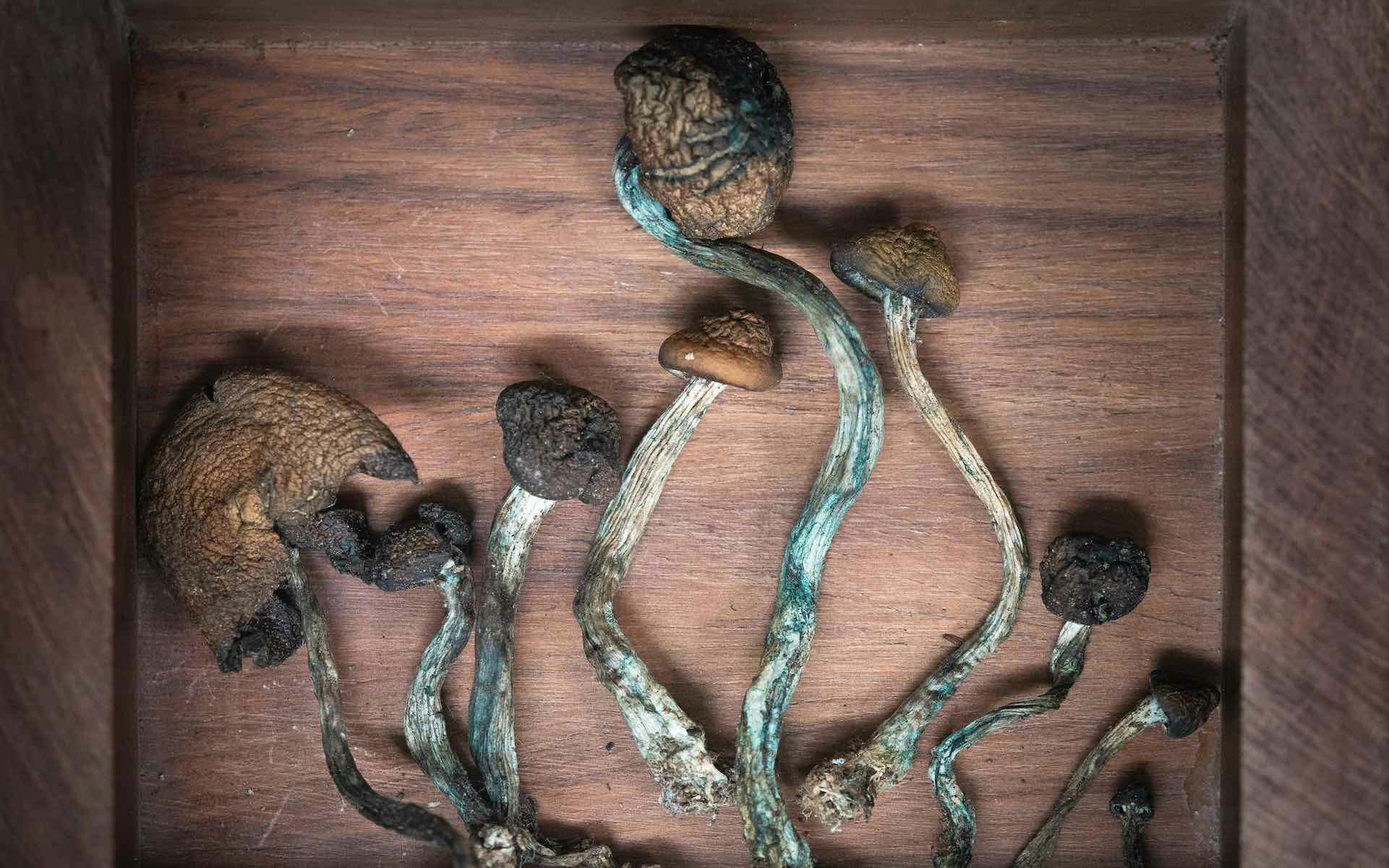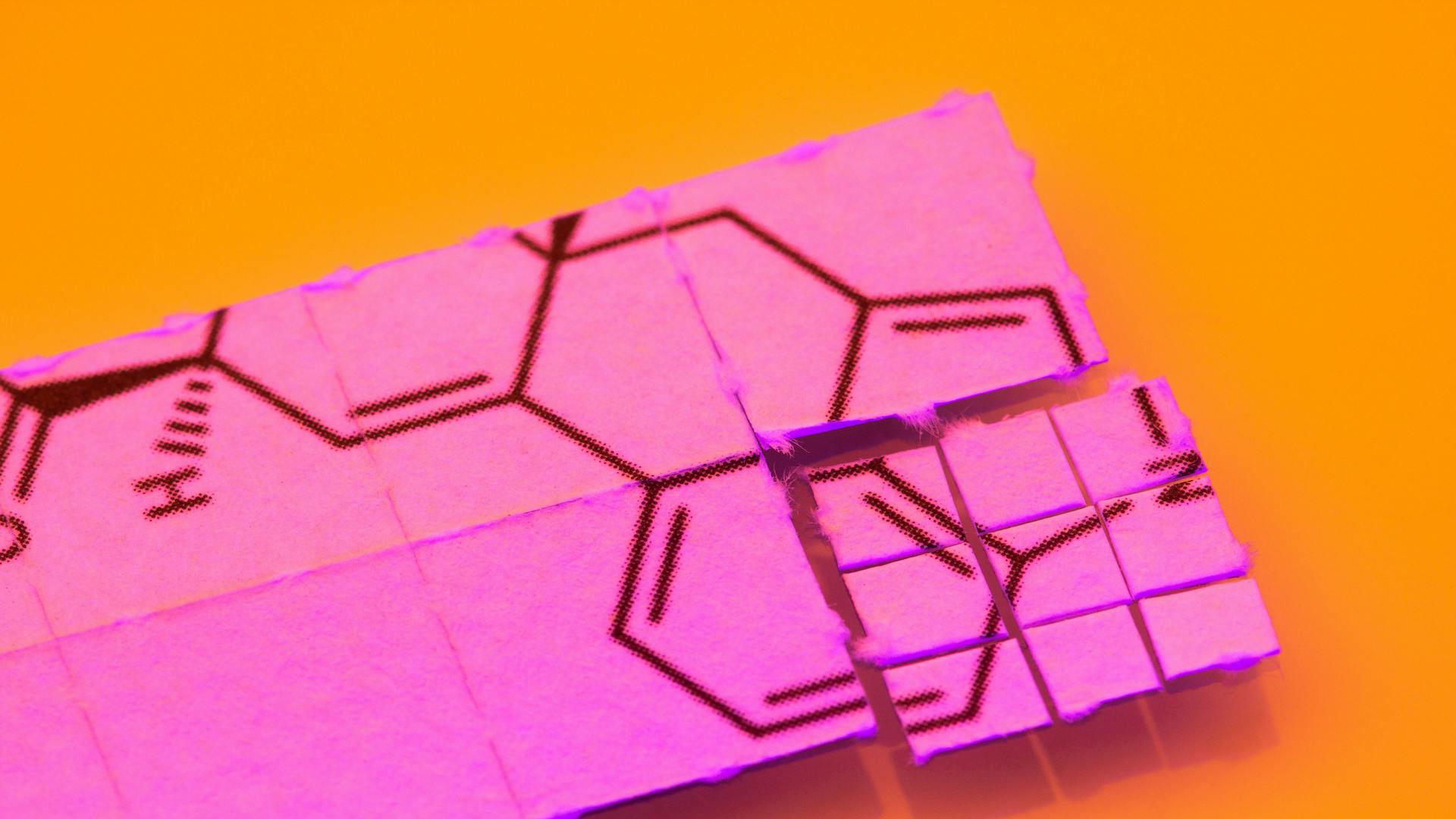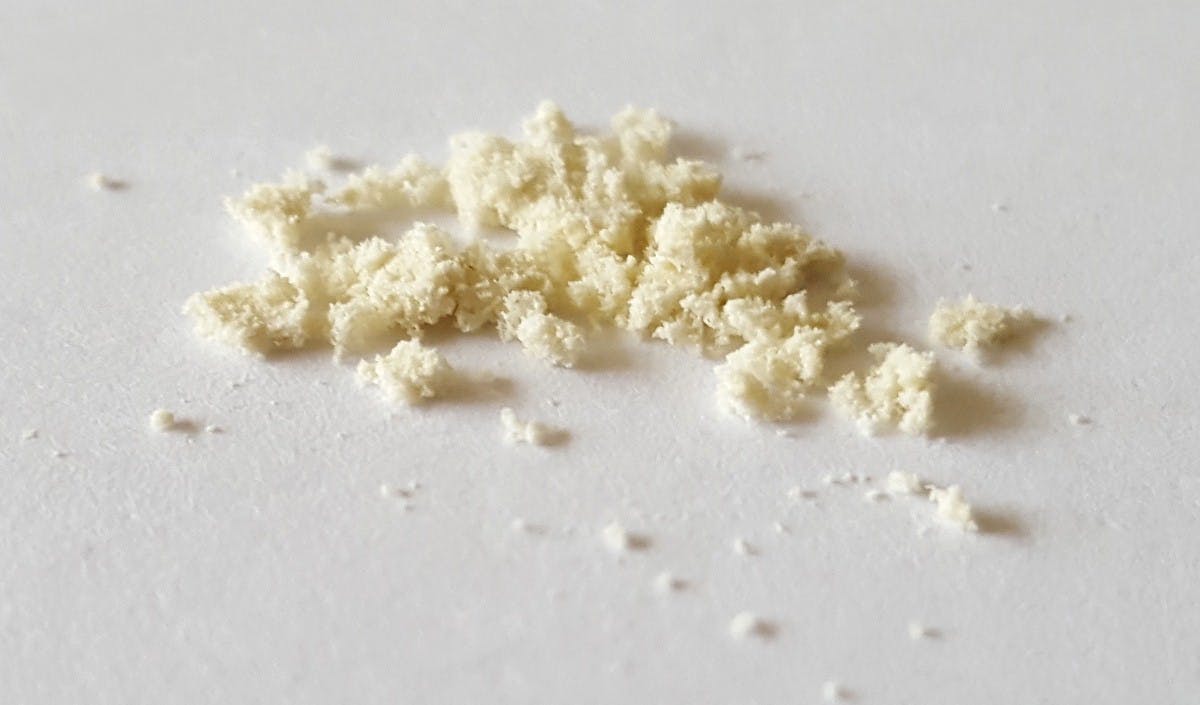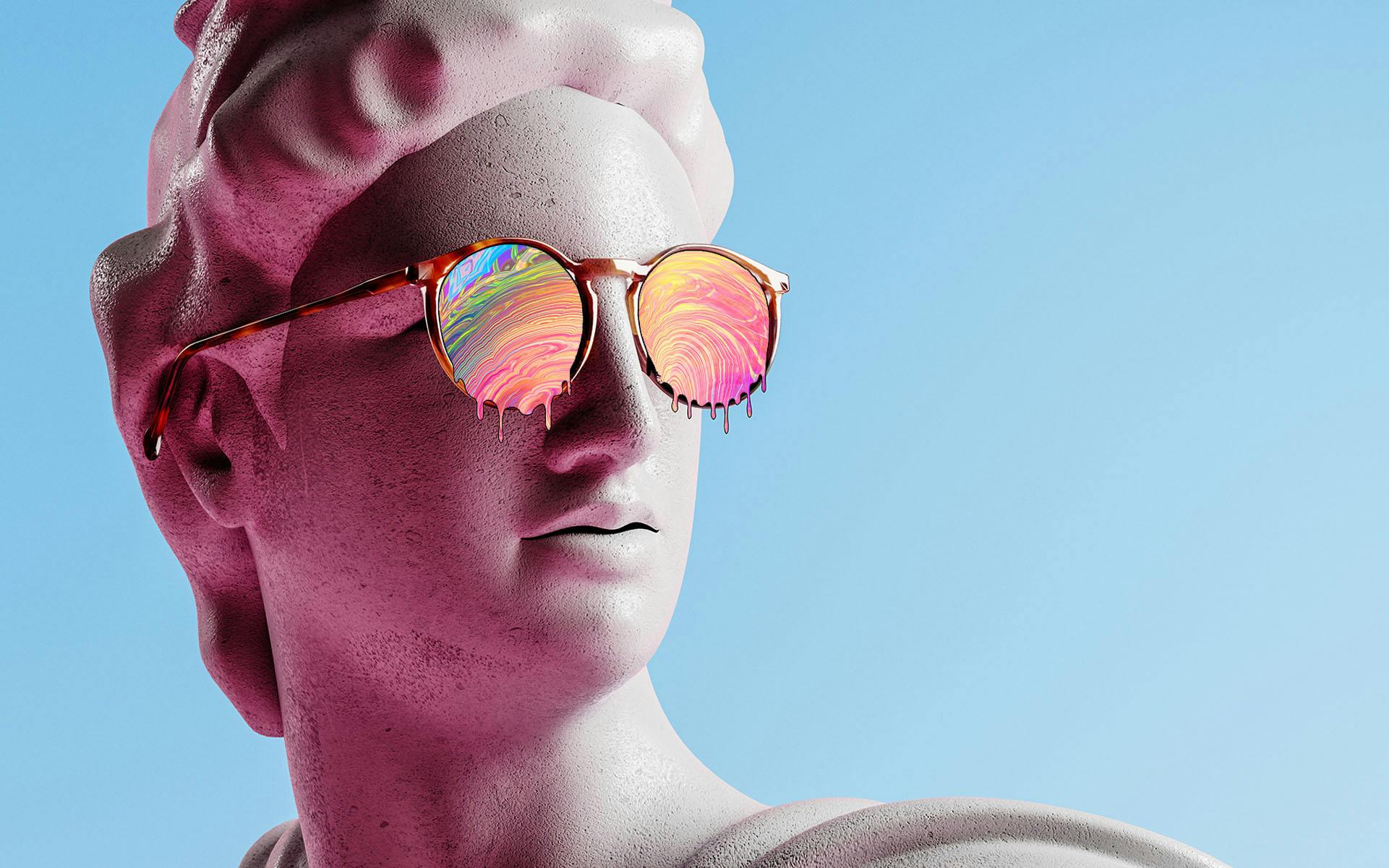Written by Emma Stone

Magic mushrooms, or shrooms, and LSD, or acid, are two of the most common psychedelics and they have a lot of similarities. Both are recognized as classic psychedelics, with a meaningful influence on science and culture, and both have been identified as physiologically safe with a low risk of sparking dependency in consumers. What’s more, mushrooms and LSD are serotonergic hallucinogens, so their primary mechanism of action is on serotonin receptors in the brain.
But do these similarities mean shrooms and acid are more or less interchangeable? How do shrooms stack up against acid when it comes to effects, ingestion method, dosage, onset time, and trip duration? What distinguishes an acid trip from a mushroom trip, if anything at all?
How are shroom and acid trips similar?
Psychedelic science is currently regaining momentum after decades of stigmatization. While the research exploring the effects of mushroom and LSD trips is still nascent, there’s a growing clinical interest in unpacking the specific experiences induced by each.
In one 2019 survey, LSD and psilocybin were found to produce the most similar effects of all psychedelic drugs surveyed. The study included 76 different questions about the experience, and researchers noted no significant differences between reports of LSD and psilocybin trips.
Consumers often have overlapping experiences on both drugs. Both LSD and shroom trips are often characterized by:
- Distorted perceptions of time
- Hallucinations
- Visual fluidity (seeing stationary objects move or melt)
- An altered sense of smell, taste, or touch
- Feelings of unity with others and the surrounding world
- Refreshed perspective on life or problems
Some of the more unwelcome aspects common to both shroom and acid trips include paranoia, fear of death, elevated heart rate and blood pressure, and sweating.
In another study, both LSD and psilocybin were significantly more likely to induce a transcendental experience than other drugs such as MDMA, cannabis, cocaine, or opiates.
And when it comes to beneficial therapeutic effects, the similarities keep mounting. Research on animals and healthy human volunteers consistently show that both psilocybin and LSD are capable of delivering lasting anxiety-reducing, antidepressant, and anti-addictive effects.
How are shroom and acid trips different?
While similarities abound between the two psychedelics, seasoned recreational consumers point out some subtle and not-so-subtle differences that also distinguish them. The overwhelming consensus appears to be that LSD induces a more stimulating or uplifting high, while shrooms deliver a more mellow, chilled-out trip.
Many individuals report a stronger sense of a body high while under the influence of mushrooms, while acid is perceived as a more cerebral experience. Nausea can sometimes accompany mushrooms, again suggesting a more noticeable load on the body.
There’s also a perception that shrooms are linked to a more introspective, reflective experience that can promote self-healing or help one work through issues. LSD, on the other hand, is seen as more fun and energizing. As one tripper articulated, “Shrooms for fixing something and LSD for going trippy mode.”
LSD consumers often experience more intense trips under the influence of LSD—both extremely good experiences and more troubling ones too. For this reason, experts stress how it’s crucial it is to get set and setting right. The right mindset, context, and environment can lead to a positive experience; a bad mindset, context, or environment can result in a bad trip. The same goes for mushrooms too.
Consumers have also logged differences in the comedown of both substances, as the trip begins to wear off and the afterglow sets in. Shrooms are generally associated with a quicker comedown, while LSD consumers report effects can linger for a day or more after, making sleeping and eating difficult.
How shrooms and acid work on the brain
The mysteries of how psychedelics work on brain chemistry are still being unraveled. What we do know, however, is that psilocybin and LSD share a fundamental mechanism of action—both influence the activity of serotonin in the brain. Serotonin is a neurotransmitter used by the nervous system to carry messages between brain cells and muscles cells.
Although serotonin receptors are found all over the brain, they occur in particularly high levels in the cerebral cortex, the region of the brain responsible for higher order functions such as perceiving, thinking, understanding language, and memory.
LSD and shrooms fire up these receptors in a disorganized way, disrupting the brain’s default function and triggering a psychedelic experience. As a consequence, the individual may experience heightened awareness of their surroundings, mood changes, and enhanced tactile senses, among other sensations.
There’s also evidence that both LSD and mushrooms, like many psychedelic compounds, facilitate free-flowing, unconstrained thinking across the whole brain. Paradoxically, they achieve this by decreasing activity and connectivity in the brain’s default mode network (DMN). The DMN is a system of interconnected regions of the brain that plays a role in introspective activities like daydreaming, thinking about oneself or others, or ruminating on the past or future.
In scans of brains under the influence of LSD (check out images here), the whole brain appears to light up as vision, attention, movement, and hearing networks become more connected—and novel sensory inputs, perceptions, and experiences enter the individual’s awareness.
Experts have theorized that greater integration and communication across the brain can help to dissolve ego boundaries and reduce the perception that one’s self is distinct from others and their surrounding environment—this may be the root of feeling a connectedness or oneness with other people and the world.
While the primary effects of LSD and shrooms take place at critical serotonin receptors, the two drugs are distinct in many other ways. LSD and psilocybin have different molecular structures and affect the activity of other brain receptors uniquely. Scientists are still figuring out the specifics of exactly how each drug influences the brain.
How do you take shrooms and acid, and how much do you take?
Psilocybin mushrooms are usually dried before they are eaten or brewed into tea. However, the psilocybin that’s used in clinical trials is generally chemically synthesized in a lab and consumed in the form of a pill.
LSD is a purely synthetic psychedelic that is derived from lysergic acid, a fungus commonly found on rye grains. The synthetic formulation is often swallowed as a pill or as a liquid from a dropper—liquid is commonly applied to tabs of paper or small gelatin squares, known as window panes and absorbed in the mouth.
LSD is among the most potent of all psychedelic drugs because a tiny amount delivers a very strong trip. A dose for a mild LSD trip is approximately 25 micrograms—that’s 0.000025 of a gram—while a more intense trip with full LSD immersion is 100 to 200 micrograms.
Mushrooms, in comparison, kick off trips at significantly higher doses. The psilocybin in mushrooms is active at doses of 3-4 milligrams, not micrograms, although in research settings, doses of 14 to 30 milligrams are often used. Shroom tea often contains a comparably weightier dose of between 1 to 2.5 grams.
How long does it take for shrooms and acid to kick in?
The onset time for shrooms and acid both depend on the individual’s metabolism, tolerance, and dose taken.
That being said, on average, both substances take approximately one hour to kick in on an empty stomach. It’s important to note that an individual’s body chemistry and the dosage taken can affect onset time. Ingesting either drug after a meal can delay onset a little as well.
How long does each trip last?
A journey on magic mushrooms usually lasts 4-6 hours, with the consumer experiencing peak effects after 2-3 hours.
LSD trips linger longer, lasting from 6-10 hours—but they can extend beyond that. One of the reasons LSD lasts so long is because it mimics serotonin in the brain and binds with serotonin receptors. These receptors have an even stronger affinity for LSD than they do for serotonin, and “close like a lid” over the LSD molecule, so the molecule cannot quickly detach. The the trip can only end when the LSD is released from the receptor and metabolized by the body.
Additionally, the afterglow, when the substance wears off and the consumer still feels slight mental and physical effects of the substance, can last for some time after a trip on either shrooms or LSD. Depending on when the substance is taken and how much, consumers can feel afterglow effects later that day and on into the next day, and possibly longer.
By providing us with your email address, you agree to Leafly's Terms of Service and Privacy Policy.



